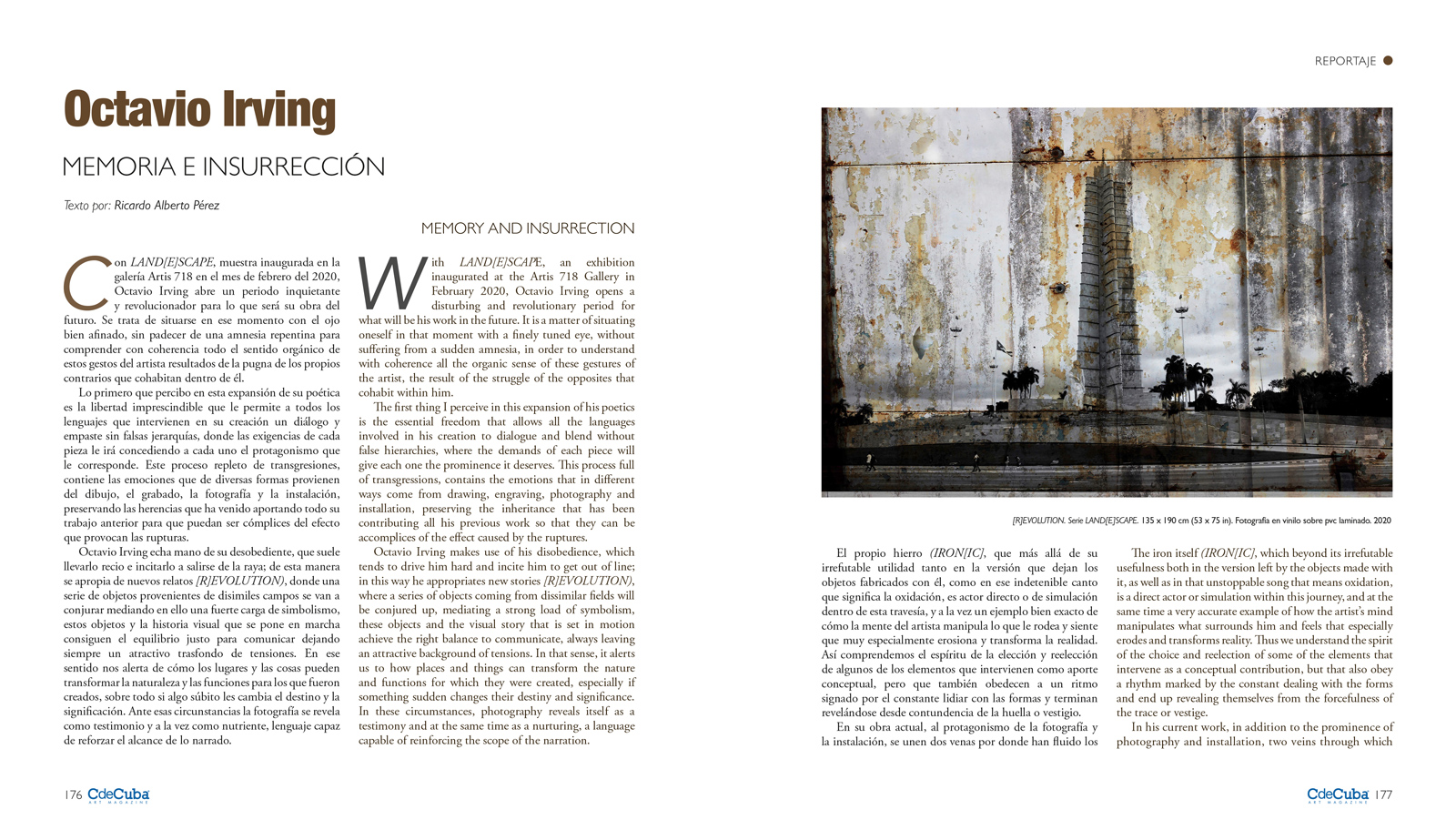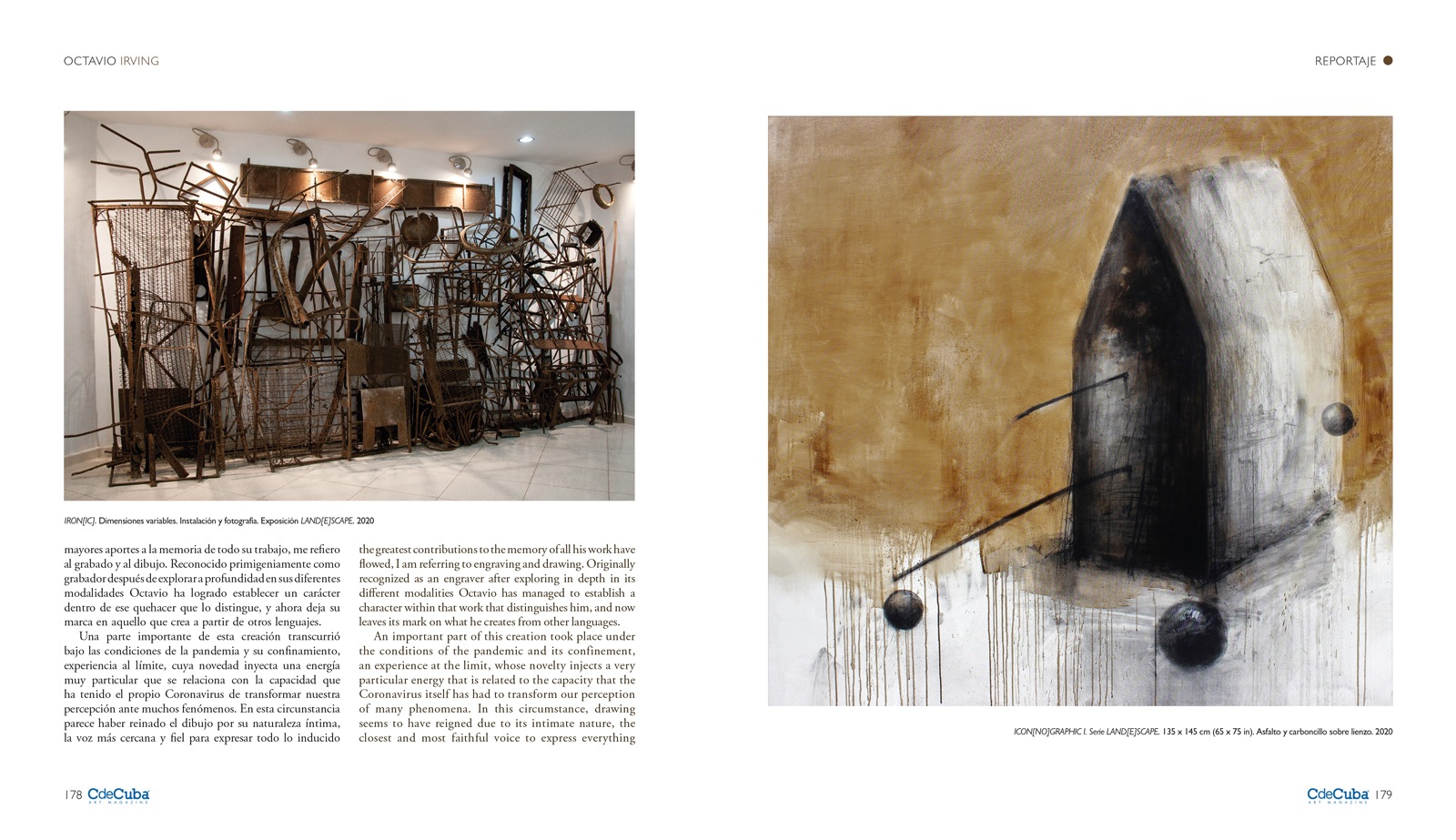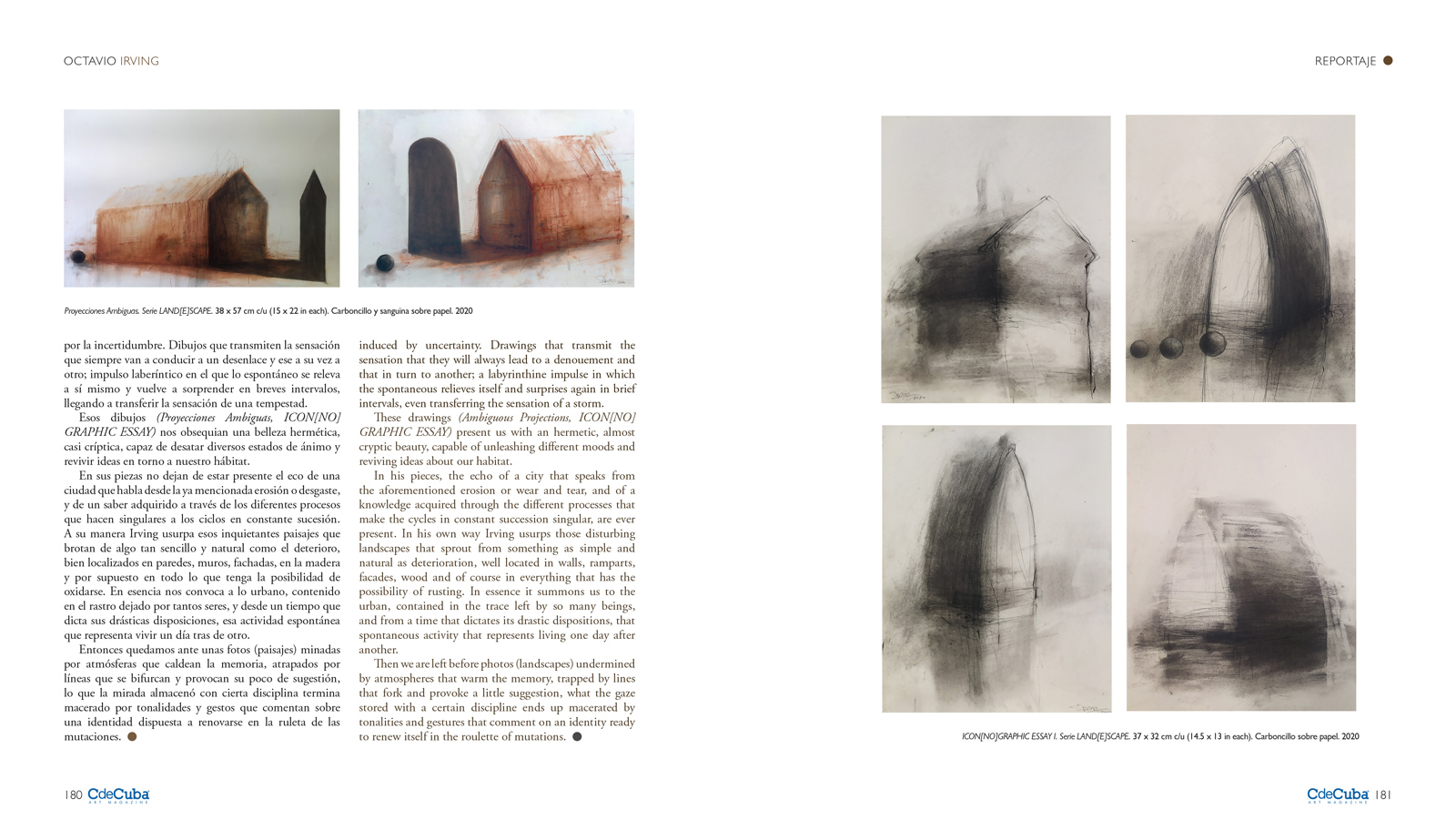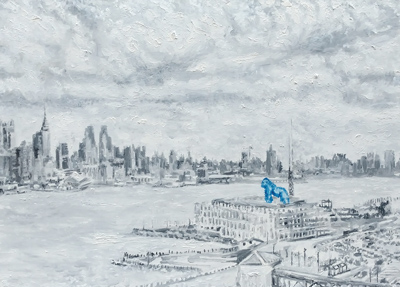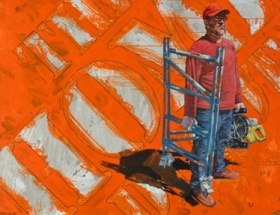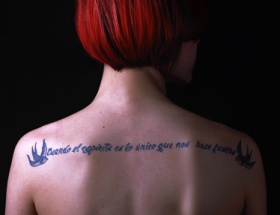Memory and Insurrection
By Ricardo Alberto Pérez
With LAND[E]SCAPE, an exhibition inaugurated at the Artis 718 Gallery in February 2020, Octavio Irving opens a disturbing and revolutionary period for what will be his work in the future. It is a matter of situating oneself in that moment with a finely tuned eye, without suffering from a sudden amnesia, in order to understand with coherence all the organic sense of these gestures of the artist, the result of the struggle of the opposites that cohabit within him.
The first thing I perceive in this expansion of his poetics is the essential freedom that allows all the languages involved in his creation to dialogue and blend without false hierarchies, where the demands of each piece will give each one the prominence it deserves. This process full of transgressions, contains the emotions that in different ways come from drawing, engraving, photography and installation, preserving the inheritance that has been contributing all his previous work so that they can be accomplices of the effect caused by the ruptures.
Octavio Irving makes use of his disobedience, which tends to drive him hard and incite him to get out of line; in this way he appropriates new stories [R]EVOLUTION), where a series of objects coming from dissimilar fields will be conjured up, mediating a strong load of symbolism, these objects and the visual story that is set in motion achieve the right balance to communicate, always leaving an attractive background of tensions. In that sense, it alerts us to how places and things can transform the nature and functions for which they were created, especially if something sudden changes their destiny and significance. In these circumstances, photography reveals itself as a testimony and at the same time as a nurturing, a language capable of reinforcing the scope of the narration.
The iron itself (IRON[IC], which beyond its irrefutable usefulness both in the version left by the objects made with it, as well as in that unstoppable song that means oxidation, is a direct actor or simulation within this journey, and at the same time a very accurate example of how the artist’s mind manipulates what surrounds him and feels that especially erodes and transforms reality. Thus we understand the spirit of the choice and reelection of some of the elements that intervene as a conceptual contribution, but that also obey a rhythm marked by the constant dealing with the forms and end up revealing themselves from the forcefulness of the trace or vestige.
In his current work, in addition to the prominence of photography and installation, two veins through which the greatest contributions to the memory of all his work have flowed, I am referring to engraving and drawing. Originally recognized as an engraver after exploring in depth in its different modalities Octavio has managed to establish a character within that work that distinguishes him, and now leaves its mark on what he creates from other languages.
An important part of this creation took place under the conditions of the pandemic and its confinement, an experience at the limit, whose novelty injects a very particular energy that is related to the capacity that the Coronavirus itself has had to transform our perception of many phenomena. In this circumstance, drawing seems to have reigned due to its intimate nature, the closest and most faithful voice to express everything induced by uncertainty. Drawings that transmit the sensation that they will always lead to a denouement and that in turn to another; a labyrinthine impulse in which the spontaneous relieves itself and surprises again in brief intervals, even transferring the sensation of a storm.
These drawings (Ambiguous Projections, ICON[NO]GRAPHIC ESSAY) present us with an hermetic, almost cryptic beauty, capable of unleashing different moods and reviving ideas about our habitat.
In his pieces, the echo of a city that speaks from the aforementioned erosion or wear and tear, and of a knowledge acquired through the different processes that make the cycles in constant succession singular, are ever present. In his own way Irving usurps those disturbing landscapes that sprout from something as simple and natural as deterioration, well located in walls, ramparts, facades, wood and of course in everything that has the possibility of rusting. In essence it summons us to the urban, contained in the trace left by so many beings, and from a time that dictates its drastic dispositions, that spontaneous activity that represents living one day after another.
Then we are left before photos (landscapes) undermined by atmospheres that warm the memory, trapped by lines that fork and provoke a little suggestion, what the gaze stored with a certain discipline ends up macerated by tonalities and gestures that comment on an identity ready to renew itself in the roulette of mutations.
